
Tell us what you need to find a matching loft conversion specialist

Get free quotes from professionals near you

Compare offers and choose the one that best matches your need
- Householdquotes.co.uk
- Conservatory
Your Conservatory Guide: Best Materials, Costs, Tips


- Conservatories rarely need planning permission for construction unless you live in a specific area.
- Various conservatory styles are available, from modern lean-to sunrooms to the elegant Edwardian and sophisticated Victorian type.
- The cost of a conservatory varies and will depend on the size, style, and materials used. The smallest conservatory cost can range between £7,000 and £8,000 f for a lean-to sunroom measuring 3.5m x 2m. A 12m² medium-sized 3m x 4m conservatory starts at around £10,600.
Despite the initial investment, adding a conservatory increases your living space and adds value. According to Finesse Windows, a 12m² conservatory adds 70% more space to your property. Moreover, NethousePrices reports that adding a conservatory can boost your property’s value by at least 7% for the added space.
In this article, we walk you through all you need to know about conservatories, including an overview of the different styles, roofing options, materials, and tips for upgrading your existing ones.
We also explain conservatory installation's legalities, helping you understand the rules and permissions involved.
If you already decided on the type of conservatory you want and are looking for competitive pricing, we can help.
We’ll connect you with four certified installers who will offer their best quotes for your project. Compare conservatory quotes for free, with no obligation, and find the best option for your needs and budget.
- Describe your needs
- Get free quotes
- Choose the best offer
It only takes 30 seconds

What is a conservatory?

A conservatory is a structure connected to a building, usually a house, with low brick walls and a glass, polycarbonate, or tiled roof. In contrast to home extensions that feature solid insulated walls, conservatories are mostly built with glass, creating an airy and light feel.
In the UK, a space qualifies as a conservatory if it has a glass covering of at least 50% of its side wall area and 75% of its roof.
People originally constructed conservatories to provide an ideal atmosphere for plants to grow. Over time, they have evolved into spaces that can be used as living rooms, offices, or dining areas.
However, earlier conservatory designs were not suitable for year-round use, as they would become too hot in summer and too cold in winter, making them uncomfortable for people. Thanks to modern technology, conservatories now have standard double glazing that helps maintain a comfortable temperature throughout the year, making them ideal for various purposes.
Conservatories vary in size and shape. Which one is best for you depends on the available space on your property. If you're unsure about the size you need for your extension, there are popular options among UK homeowners. These include 4m x 3m (12m²), 4m x 4m (16m²), and 5m x 3m (15m²).
Adding a conservatory is a popular and effective way to maximise living space as moving to a new property has become more expensive for UK homeowners, according to experts at DesigningBuildings.
Not only does adding a conservatory maximise your living space, but depending on the quality of workmanship and the property's location, it also increases your property value by up to 7%, says NethousePrices, which increases saleability.
Do you need planning permission for a conservatory?
In the UK, adding a conservatory to your home typically falls under "permitted development", as per the Planning Portal. This means that you can extend your house without planning permission requirements, provided you follow certain limitations and conditions.
However, specific rules vary across England, Scotland, Wales, and Northern Ireland. Additionally, more restrictive conditions apply in designated areas such as conservation areas or listed buildings.
In addition, before building a conservatory, you must inform your neighbours under the Neighbour Consultation Scheme. This scheme helps establish an agreement by the local authority to ensure both parties concur and allows for a smooth development.
Regional Guidelines
Let's review the regional guidelines to determine if your conservatory project qualifies for permitted development without planning permission.
England and Wales: If you live in England, you can build a conservatory without planning permission if you adhere to specific size, location, and height conditions.
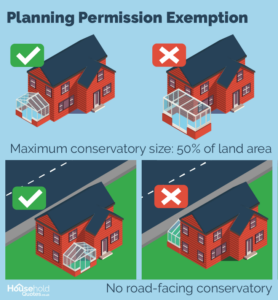
- Size limitation: Ensure the conservatory does not exceed half of the land (50%) surrounding your house.
- Location restrictions: You must not build your conservatory in front of or to the side ofthe house that faces a road.
- Height restrictions: The maximum height is 4 metres for a single-storey rear conservatory extension, and within 2 metres of a boundary, the maximum height is 3 metres (Planning Portal Guidelines).
- Distance from boundary: Conservatories must be at least 2 metres from property boundaries to ensure privacy and avoid disputes.
In 2019, the UK government revised its rules to allow larger extensions, including conservatories, to be built without planning permission. According to the guidelines, terraced or semi-detached homes can extend up to 6 metres into the garden without planning permission, while detached homes can extend up to 8 metres. However, you must follow additional guidelines.
Scotland, Wales, and Northern Ireland: Different planning rules apply in these territories. For instance, extensions exceeding 3m or 4m in length typically require full planning permission in these regions.
Building regulations
Regardless of planning permission, conservatory extensions must comply with certain building regulations in England and Wales.
- Exemptions: Conservatories with an independent heating system and thermal barrier, less than 30m2, and at ground level are exempt from building regulations.
- Open-plan conservatories: Removing exterior doors or walls requires approval from building regulations. This involves structural, working drawings, and heat-loss calculations.
Scotland: The Scottish Building Standards technical guidelines outline that conservatories larger than 8 m² require a building warrant. Specific requirements may apply to smaller conservatories based on fixtures and proximity to boundaries.
Northern Ireland: Conservatories in Northern Ireland must follow specific regulations.
- Minimum translucency for roof: 75%, for walls: 50%.
- The glazing must adhere to Building Control Northern Ireland regulations.
- Maintain a thermal break between the extension and the dwelling.
- Do not extend or install heating in the conservatory without permission.
If you have any doubts, it's always best to consult your local building authorities or architects and designers who stay up-to-date with building regulations and can incorporate them into their designs for approval. Get a local installer QUOTE now!
What are the different conservatory styles?
You can choose from several styles of conservatories based on your property’s suitability, taste, and budget.
Below, we will walk you through the different styles of conservatories, their benefits and their unique characteristics.
Lean-to Conservatory

One of the most popular conservatory styles in the UK is the lean-to-conservatory — also known as a lean-to sunroom. These square or rectangular conservatories attach to the side of your house.
A lean-to conservatory is a modern and minimalistic take on classic conservatory design. Unlike traditional conservatories with high-pitched roofs, lean-to conservatories have low-pitched roofs that appear to lean against the side of the building. This design creates a seamless extension between the home and conservatory, making it ideal if you prefer a contemporary look.
Unlike other conservatory styles, lean-to conservatories in the UK have simple designs that don’t require too much space, making them suitable even for smaller homes with limited outdoor space. Your lean-to conservatory can achieve a sleek and modern appearance when complemented with slim aluminium frames.
The Mediterranean-inspired style of a lean-to sunroom suits any home as it integrates naturally with its surroundings, unlike Victorian or Georgian-era conservatories, which are more grandiose and stand out.
If you have a bungalow, opting for a lean-to-conservatory makes perfect sense, given the compatibility with bungalows’ characteristics, low rooflines and gently sloped roofs. Additionally, if you want contemporary conservatory installations, lean-to conservatory prices fitted and complete, are among the most affordable options compared to other types.
Conservatories experts Everest say Edwardian and Victorian conservatories cost 25% more than lean-to conservatories. And you can expect to pay less than half of what you would for a modern orangery.
So, if done correctly, opting for a lean-to conservatory can be affordable, versatile, and add value to your property.
Victorian Conservatory
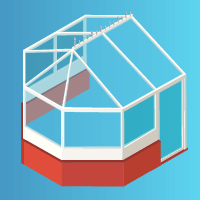
The Victorian conservatory is one of the most sought-after conservatory styles in the UK. It has a bay front, a tall peaked roof, and numerous glass panels.
The style comes in two variants:
- Three-facet Victorian-style conservatory: The 3-facet Victorian style showcases three wide, angled windows to provide ample space and light
- Five-facet Victorian-style conservatory: The 5-facet Victorian style features five principal windows in the bay front, creating a period profile that blends space and a classical look.
One of the main benefits is that you can seamlessly integrate a Victorian conservatory with the rest of your property by using similar materials, such as brick. If you want to reduce energy expenses, installing double or triple-glazing windows can make your house and conservatory more energy-efficient and reduce your heating costs.
Edwardian Conservatories

An Edwardian conservatory is a classic and elegant addition to any home. Its rectangular shape and peaked roof exude a timeless charm that never goes out of style.
This type of conservatory is incredibly versatile and can blend seamlessly with most home styles, from modern to traditional, making it a popular choice among UK homeowners. It adds value to your property and creates a spacious and airy feel that can be used for various purposes, such as a dining room, living room, or home office.
If you opt for an Edwardian conservatory, consider materials like tiles and bricks, which can keep the heat in and the cold out, significantly reducing your energy usage and lowering your energy bills year-round. This means that you can enjoy the benefits of your conservatory without worrying about its impact on your energy costs.
Overall, an Edwardian conservatory is a great investment if you’re looking for a beautiful, practical, and cost-effective way to extend your living space.
P-shaped Conservatories
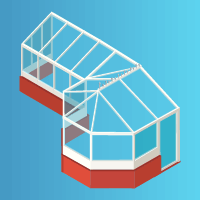
A P-shaped conservatory is a versatile design that can cater to your specific needs and preferences. The rounded portion follows the Victorian style, while the straight part can be designed in either an Edwardian or a lean-on style. Depending on your requirements and space, you can customise this conservatory type to be large or small.
The P-shaped conservatory is popular for those who want a unique and eye-catching addition to their home.
T-Shaped Conservatory

A T-shaped conservatory is a great option for extending living space in a home in the UK. Its unique design resembles the letter "T" and often features a Victorian-style layout. It includes a central projection that extends into the garden and French doors, which allow you to enjoy the garden on sunny days.
T-shaped conservatories are most suitable for larger homes with spacious gardens and can accommodate multiple functions, such as a dining area, lounge, and snug, says ConservatoryLand. They offer customisation options to cater to your specific needs and preferences and can potentially increase your property's value.
Regency / Gable Conservatory
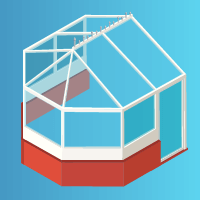
Regency conservatories are popular for UK homeowners who desire a modern and sophisticated look. A regency conservatory features a pitched roof and a distinctive gable end design, which creates a smooth L-shape that projects from the house.
This unique design element contributes to a more contemporary aesthetic that complements modern home designs. IndependentUK advisers suggest adding French patio doors to the Regency Conservatory design for a complete look and a connection with the outdoor space.
Orangery

Many people view an orangery as a "home extension" and think it serves a similar purpose as a Conservatory. However, there are distinctions between the two.
According to Orangeries UK, the key differences lie in the base and the roof. Orangeries often feature a brick base, a flat perimeter roof, and a central roof lantern.
On the other hand, conservatories usually have a central pitched roof and a frame construction that reaches from the ground to the pitched roof edge without a perimeter.
Types of Conservatory Roofs
Choosing the right type of roof for your conservatory can significantly impact its appearance, functionality, and comfort.
Your choice affects the conservatory's aesthetic appeal, thermal efficiency, maintenance requirements, and integration with your home's architecture.
In the following sections, we will explore the various types of conservatory roofs available, each offering unique benefits to suit different preferences and needs.
Understanding the options available for roofing, from traditional tiles to modern glass and hybrid solutions, can help you make an informed decision.
Solid Tiled Roof
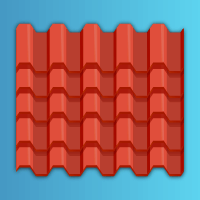
A solid tiled roof is an excellent choice for a conservatory if you're looking for better insulation, durability, and aesthetic appeal. This roofing option blends well with the main house and allows for year-round use of the living area.
However, it’s heavier and more expensive than other options and may require additional structural support. Matching the tiles to the main house can give your conservatory a natural extension look, adding great value to the home.
- Durable
- Blends with house
- Increase property value
- Low maintenance
- Heavier
- More expensive
- Extra structural support
Glass Roof

Glass roofs are popular for conservatories because of their aesthetic appeal and benefits. They offer a seamless outdoor connection while protecting from harsh weather conditions, especially in the UK.
Glass roofs can fill a lean-to conservatory with natural light, creating a sense of openness and enhancing the overall aesthetic appeal. However, it's important to consider both advantages and drawbacks when exploring glass roof options for conservatories.
- Elegantly enhances the aesthetic appeal
- Provides excellent natural light
- Provides unobstructed views
- Can be more expensive
- Higher maintenance (requires regular cleaning for clarity)
- Uncomfortable heat gain/loss, consider specialised glazing upgrades
Polycarbonate Conservatory Roofs
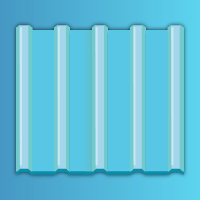
Polycarbonate roofs are also popular for conservatories because they are affordable and versatile. They’re durable, lightweight, diffuse sunlight, and available in various colours and thicknesses. However, they may not offer the same level of thermal insulation as other roof types. If you choose a polycarbonate roof, consider ways to make your conservatory warmer.
When exploring Polycarbonate conservatory roof options, it's essential to consider both the advantages and drawbacks.
- More affordable than glass
- Good insulation properties
- Resilient to weather changes
- Less cleaning than glass
- Less aesthetic appeal compared to glass
- Can become discoloured over time
- Does not offer the same level of clarity or visibility as glass
Determining the pros and cons of a conservatory's design heavily depends on the choice of materials. Nevertheless, the roof design impacts both upkeep and expenses, making it crucial to grasp the various material options.
Now, let's explore the different shapes of conservatory roofs, their unique characteristics, and the pros and cons associated with each.
Pitched/Sloped Roof
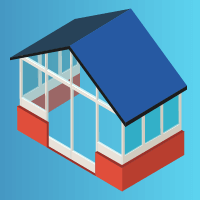
Pitched roof conservatories are more common due to their aesthetic appeal and practicality in managing weather-related challenges. They feature two sloped sides that meet at a peak, resembling traditional housing roofing.
- Aesthetic appeal and traditional design
- Effective water runoff
- Can accommodate various roofing materials
- Can be more expensive due to the complexity and size
- May require significant structural support
- Varied maintenance depending on the material used (glass needs more cleaning, tiles might need occasional repair)
Single-slope Roof (Lean-to)
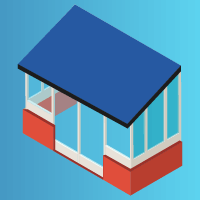
A single-slope roof conservatory is a type of conservatory with only one slope, typically leaning against a house wall. The design is easy to construct, making it an ideal choice for those looking for a simple and effective way to add some extra space to their home.
The single-slope roof conservatory is also easy to attach to an existing structure, which can help to save time and money during the building process.
- Low cost and practical for small spaces
- Easy installation
- Efficient water runoff
- Basic style that might not complement all house styles
- Limited design flexibility
- May offer less insulation than more complex conservatory roof types
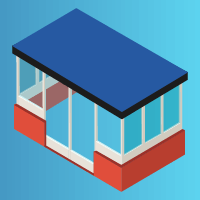
Flat Roof Conservatory
Flat roof conservatories are ideal for homes with overlooking windows, height restrictions, or bungalows. Proper materials and structure can prevent leaks and drips, and a good drainage system can help.
- Sophisticated, sleek design
- Possible to combine with lantern roof
- Versatile use of space
- Potential for water pooling if not properly designed
- Limited natural light compared to pitched designs

Conservatory Thermal Roof
A conservatory thermal roof provides superior insulation, making the conservatory usable throughout the year. It incorporates materials and technologies that keep heat during winter and reflect excessive sunlight in summer, balancing the indoor temperature.
- Balanced temperature
- Reduced energy bills
- Year-round comfort
- Low maintenance
- Higher installation cost
- Specialised design
- Fully-glazed limits natural lights
Hybrid Conservatory Roof
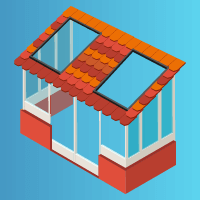
A hybrid conservatory roof is an excellent solution for homeowners who want a traditional extension and a conservatory. It combines solid construction and glazed panels to create a light-filled and comfortable living space.
The roof has an insulated section and large glazed panels, which provide excellent insulation, keeping the space warm in winter and cool in summer. This design also reduces glare and noise, creating a peaceful atmosphere.
The hybrid conservatory roof is highly customisable, with various design options to suit any property style. It is a cost-effective and efficient way to enhance your home, create a comfortable living space, and add value to your property.
Consider a hybrid conservatory roof if you want a modern and practical solution for your extension or conservatory.
- Versatile design & custom configurations
- Year-round insulation
- Noise & glare reduction
- Moderate maintenance
- Higher upfront costs
- Longer build & fitting time
Types of Conservatory Materials
uPVC (Unplasticised Polyvinyl Chloride), aluminium, and wood are the most commonly used materials for conservatory structures and frames.
Before choosing a material for your conservatory's design, it's essential to understand each material's features and benefits, as well as its pros and cons.
Each material has distinct features that can help you decide which is best suited for your conservatory style. Let’s explore them.
uPVC conservatories
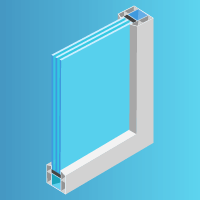
uPVC (Unplasticised Polyvinyl Chloride) is a popular choice for conservatory construction in the UK, according to ConservatoryOutlet, a leading UK conservatory retail outlet company.
This synthetic material is an affordable, low-maintenance option that can withstand harsh weather conditions. It won't rot, warp or fade quickly, making it a durable choice.
uPVC conservatory materials are available in different colours, allowing you to customise and match them with your home's aesthetics.
- Minimal maintenance required
- Affordable compared to other materials
- Durable and resistant to decay, warping and fading
- Various colour options
- Lower insulation properties, which may affect energy efficiency
- Can become brittle over time
- Can look less appealing compared to options like wood or aluminium
Aluminium Conservatories
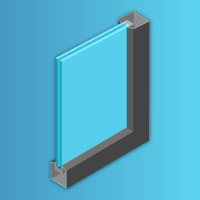
Aluminium is popular in the UK for modern conservatory designs because of its sleek, contemporary appearance, according to GGF (Glass and Glazing Federation, UK).
Slim profiles maximise glass usage for a stylish, light-filled structure. Aluminium is both lightweight and incredibly strong, ensuring long-lasting durability. Its corrosion resistance ensures a low-maintenance, long-lasting conservatory.
When combined with energy-efficient glazing, aluminium conservatories offer excellent thermal performance, regulating temperature and reducing energy costs.
Aluminium conservatories might have a higher initial cost, but their long-term advantages make them a worthwhile investment. They require very little upkeep and occasional cleaning to keep them looking great. Unlike other materials, aluminium doesn't rust, fade, or need repainting, making it an excellent option if you want something long-lasting and easy to maintain.
- Contemporary, sleek design with slim profiles
- Strong yet light
- Doesn’t rust and last long
- Low maintenance
- Cost more initially
- Loses heat easily with poor insulation
- Can get damp
Wood Conservatories
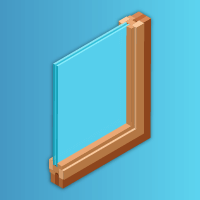
Wood or timber conservatories are an excellent way to add warmth and character to any home. They are a natural, renewable material that provides excellent insulation.
However, they require regular maintenance and may need to be painted with special paint to protect them from the weather.
A conservatory built from Accoya wood can last for up to 80 years, says Reddish Joinery UK. Still, other components, like window locks, may need to be replaced during this period.
Overall, wood conservatories offer a timeless and elegant solution that can fit with various architectural styles and design preferences to create a comfortable and pleasing functional space.
- Time, warm aesthetic appeal
- Great insulation properties for energy efficiency
- Customisable to various architectural styles
- Renewable materials, offering an eco-friendly option
- Requires regular maintenance to prevent rot, moisture damage, and pests
- Higher costs compared to other materials
- Higher recurring maintenance cost
Each material (uPVC, aluminium, and wood) has distinct benefits for conservatory construction. Your choice should align with your aesthetic preferences, maintenance capacity, and budget. To help you get started, use our free quote service for tailored advice and quotes from professional conservatory fitters. This service allows you to get up to four free quotes, expert recommendations, and competitive pricing for your project, helping you make the best choice for your home.
How Much Does a Conservatory Cost?

The average cost of a new conservatory in the UK is between £7,000 and £8,000 for a fully fitted small lean-to structure measuring 3.5m x 2m. The estimate includes an uPVC frame with a polycarbonate roof and a dwarf wall. For a larger conservatory measuring 3m x 4m or more, prices can start at £10,600 and more.
The cost of services can vary based on location, with London and the South East being up to 20% more expensive than other regions.
To help estimate conservatory expenses, we have provided a detailed overview of potential investments required for conservatory designs ranging from popular 3m x 4m to 5m x 4m UK sizes.
| Type | Sizes | Cost range (Fit + VAT) |
|---|---|---|
| Lean-to | 3cm x 4cm - 4cm x 4cm | £10,000 - £20,750 |
| Victorian | 3cm x 4cm - 4cm x 4cm | £11,000 - £24,700 |
| Edwardian | 3cm x 4cm - 4cm x 4cm | £10,000 - £23,600 |
| Regency/Gable-end | 3cm x 4cm - 4cm x 4cm | £11,550 - £20,950 |
| T-shaped | 5cm x 3cm - 5cm x 4cm | £13,750 - £23,400 |
| L-shaped | 3cm x 4cm - 4cm x 4cm | £13,375 - £22,345 |
| P-shaped | 5cm x 3cm - 5cm x 4cm | £13,250 - £16,500 |
However, despite the initial large investment, adding a conservatory to your home is still possible, even with a small budget or limited space. The installation cost may vary depending on your needs, preferences, and budget.
If you're trying to choose between a conservatory and an extension, it's important to understand that they are different.
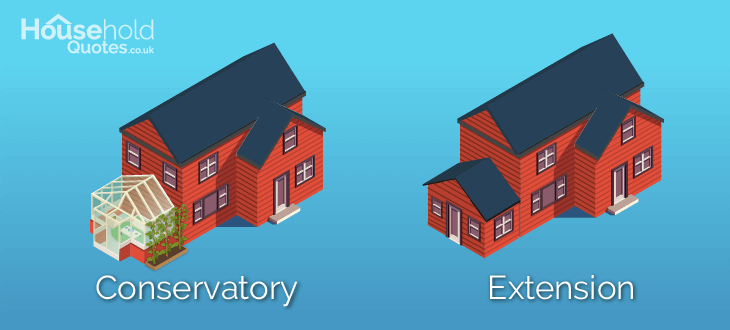
Conservatories, at most, require a lower initial investment compared to a single-storey extension of comparable size, making them a more affordable choice for enhancing outdoor living space with expansive views, according to CobbleDaleConstruction.
On the other hand, extensions are more integrated additions to a home that require a broader scope of construction work. ConservatoryLand says this includes additional expenses for architectural services, skip hire, and creating new openings, all of which drive up the overall cost.
Plus, labour for building an extension may be costlier because it takes longer to construct than conservatories. Constructing conservatories involves using lighter materials and designing them to maximise natural light within your home.
They offer the unique benefit of providing a year-round connection to the outdoors, which is particularly valuable in the UK’s unpredictable weather conditions.
This makes conservatories a more affordable alternative and an appealing solution if you want to brighten your living space and enjoy your garden throughout the year.
Ways to Improve Your Existing Conservatory
Improving your existing conservatory can enhance its functionality, aesthetics, and energy efficiency (UK regulations for conservatories), making it a more comfortable and enjoyable space year-round.
Here are effective ways you can upgrade your conservatory.
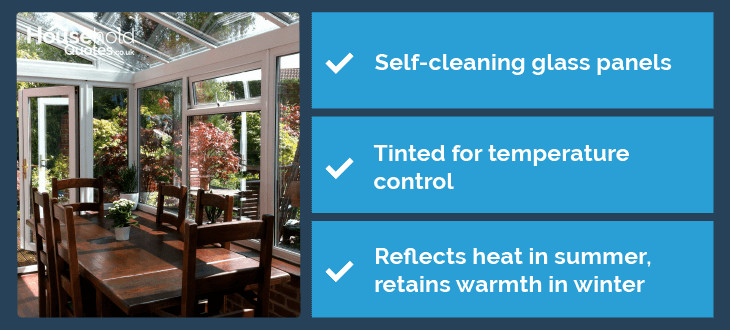
- Double glazing: It’s an effective way to improve the thermal efficiency of your conservatory. It helps maintain a comfortable temperature throughout the year by retaining heat in the winter and reflecting heat during the summer. This upgrade not only enhances comfort but also significantly reduces energy bill costs.
- Enhanced insulation: Insulation is crucial for a comfortable conservatory all year round. Quality insulation materials for walls, floors, and roofs can provide warmth in the winter and coolness in the summer, which includes underfloor heating, insulated plasterboard, and specific conservatory insulation solutions.
- Roof upgrade: Upgrading your conservatory roof can improve thermal performance and aesthetics. Choose between a glass roof with double glazing for better insulation, a solid tiled roof for a homely feel, or a roof with vents for improved ventilation. Your budget, conservatory size, and style will determine your best option.
- Update frames and doors: Old uPVC frames and doors can be inefficient and discoloured. Switching to advanced uPVC or aluminium frames can improve your conservatory's appearance and energy efficiency. Better sealant and thermal properties in modern frames help cut energy bills and create an enjoyable living environment throughout the year.
These upgrades can significantly enhance your conservatory's usability, appearance and efficiency, turning it into a comfortable living space throughout the year. While each option represents an investment, they can ultimately save money on energy bills and increase the value of your home.
To find the best option for your conservatory, consult with local conservatory specialists who can provide tailored advice and solutions.
Get the best conservatory prices

If you're looking for affordable conservatory prices, CompareCompany UK recommends comparing quotes from local and national installers. Rather than settling for the first installer you come across, comparing prices and finding a trustworthy company can help ensure you get the best deal possible.
Why compare quotes for better conservatory prices?
Get the best prices: Installer rates can differ significantly. It's important to compare them side by side to avoid overpaying.
Find trustworthy companies: Compare quotes to find reliable installers committed to quality work.
How can Household Quotes help?
- Our free service connects you with up to four vetted installers in your local area without any cost.
- We strive to simplify choosing the best installer from the list for you.
- You can proceed with the process only if you are completely satisfied and not obligated to do so.
Whether you’re looking to add a conservatory to your home or upgrade an old one with a modern style, we can help you.
With four free quote requests, search for the right tradespeople and prices. It takes one minute. Click the link below.
- Describe your needs
- Get free quotes
- Choose the best offer
It only takes 30 seconds

FAQ
The cost of a conservatory ranges from £7,000 – £7,000 for a lean-to sunroom measuring 3.5m x 2m. The cost varies based on materials, design, and size. Get the best price by comparing quotes from multiple installers.
A conservatory is often cheaper than an extension because it doesn’t require complex structural work like extensions. Even with a lower investment, your property value can increase by at least 7%—12%.
You typically don’t need planning permission for a conservatory if you follow specific size and height rules and don’t live in a conservation area. However, it’s always advisable to check with your local authority before embarking on your conservatory project. A conservatory is not the same as an extension, which is integrated with the rest of your house.
In UK homes, a conservatory is considered a structure with glass covering at least 50% of its side wall area and 75% of its roof. Typically, it is attached to your main house and can serve as a dining area, lounge, playroom, or any other function you desire.

Rousanna is an SEO content writer at Household Quotes with a background in digital marketing and copywriting. She creates informative, well-researched home improvement content based on practical ideas to help readers make informed decisions.
